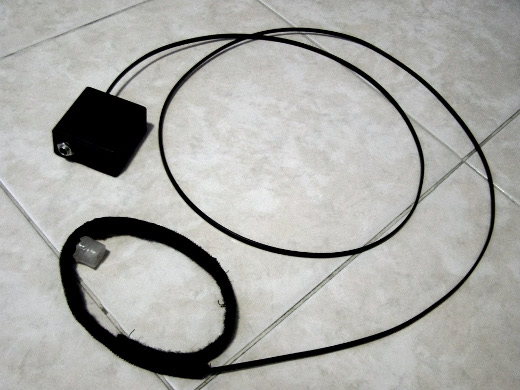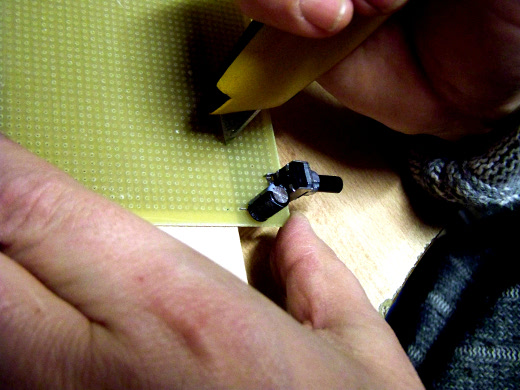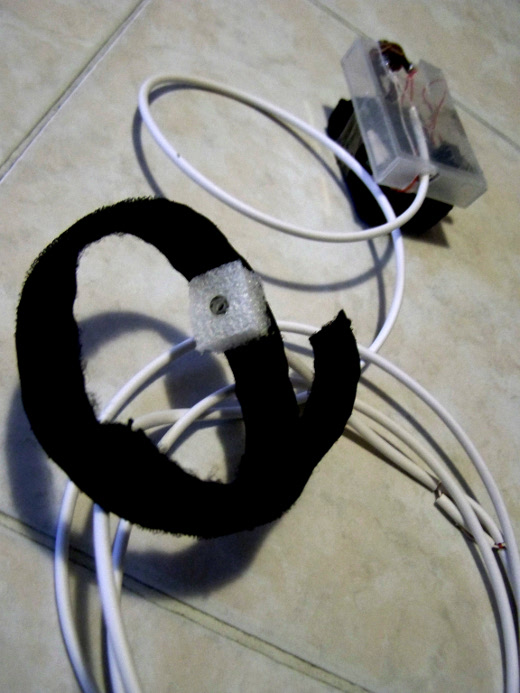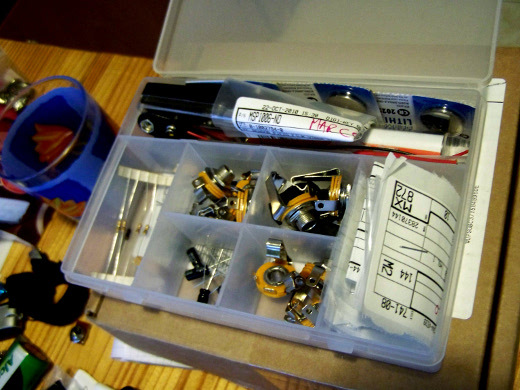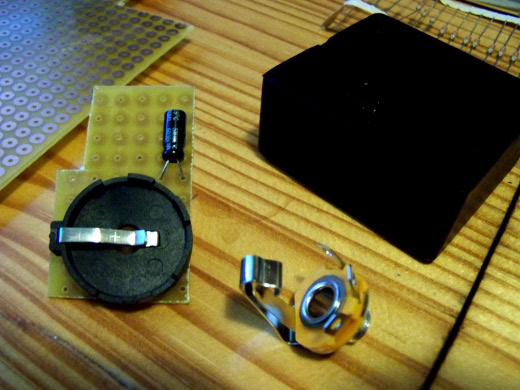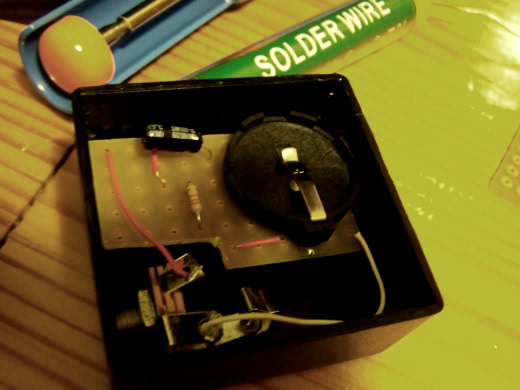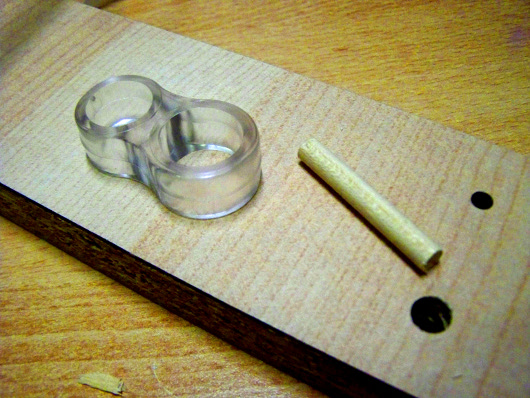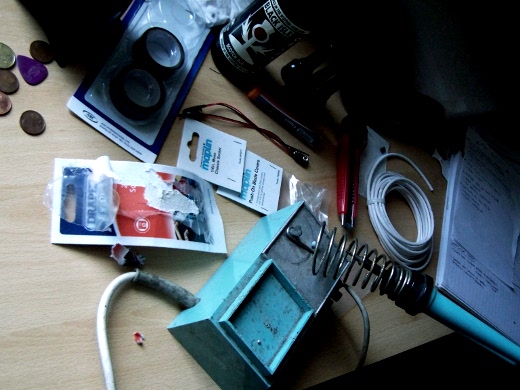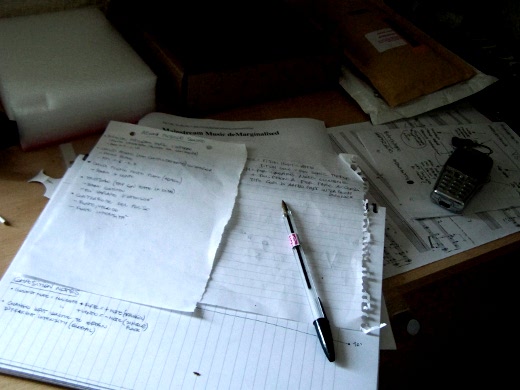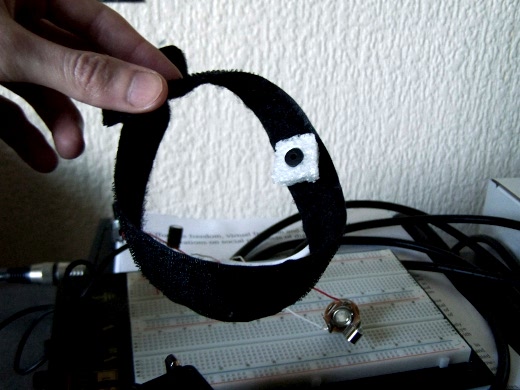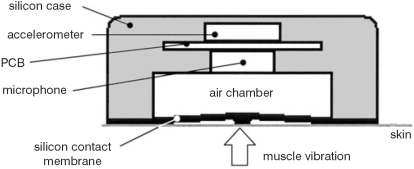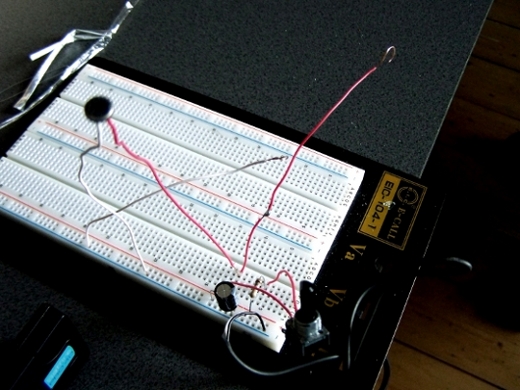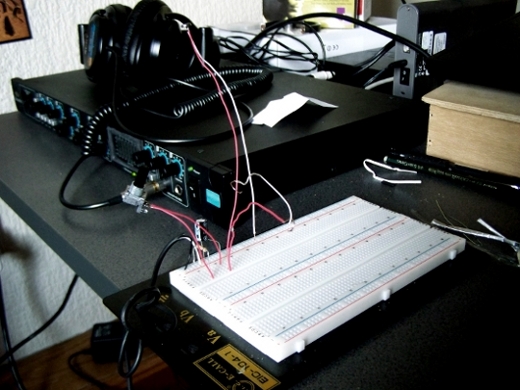Xth Sense > Hardware Design
Sensor hardware wearable prototype v1
Here’s the Xth Sense biosensing wearable prototype v1.
Keeping up with the hardware design for a couple of weeks, I eventually felt it was the right time to make it wearable. During the Christmas holidays I came back to Italy where Andrea Donnarumma and Marianna Cozzolino gave me an incredibly precious support both during the design process and the technical development.
Before undertaking the development of the Xth Sense sensor hardware, few crucial criteria were defined:
- to develop a wearable, unobtrusive device, allowing a performer to freely move on stage;
- to implement an extremely sensitive hardware device which could efficiently capture in real time and with very low latency diverse muscle sounds;
- to make use of the most inexpensive hardware solutions, assuring a low implementation cost;
- to implement the most accessible and straightforward production methodology in order to foster the future re-distribution and openness of the hardware.
So here’s a loose summary of the making of the Xth Sense biosensing hardware wearable prototype v1.
First, we handled the battery issue. We were not sure whether the microphone would have reacted properly and with the same sensitivity using a standalone battery, so we hacked an old portable minicassetter recorder and extracted the battery case. Next we built the circuit on a copper board, included a trimmer to regulate the voltage feeding the microphone and embedded everything in a plastic DV cassette box along with a 1/2 mono chassis jack socket. Then, we used some common wiring cable to connect the hacked battery case to the circuit and the bracelet to the circuit box.
The resulting device was obviously quite unsophisticated, but we simply wanted to make sure the microphone would have maintained the same capabilities while on battery charge. The experiment was successfull and we started planning a more usable and good-looking design.
First of all we looked for appropriate components: black box (3.15 x 1.57 x 0.67), smaller condenser and resistors, 3V coin lithium batteries and their holders (which were not so easy to find as we expected) and a more flexible wiring cable.
At this point, circuit needed to be used on a smaller copper board, so we slightly changed its design in order to decrease size and make it nicely fit the box.
Device worked like a charm, but in spite of the positive results the microphone shield required further trials. The importance of the shield was manifold; an optimal shield had to fit specific requirements: to bypass the 60Hz electrical interference which can be heard when alternating electric current distribute itself within the skin after a direct contact with the microphone metal case; to narrow the sensitive area of the microphone, filtering out external noises; to keep the microphone static, avoiding external air pressure to affect the signal; to provide a suitable air chamber for the microphone, in order to amplify sonic vibrations of the muscles, allowing to capture also deeper muscle contractions.
First, microphone was insulated by mean of a polyurethane shield, but due to the strong malleability of this material, its initial shape tended to undergo substantial alterations. Eventually, sensor was insulated in a common silicon case that positively satisfied the requirements and further enhanced the Signal-to-noise ratio (SNR).
This detail notably increased the sensitivity of the biosensing device, giving a wider range of interaction.
Such result satisfies the present hardware requirements: the device is very small, it can be put in a pocket or hooked to a belt, and it is enough sturdy to be used with no particular care. I’m going to test the performance of the device during a demo presentation at Suonisonori, Milan Italy in few days.
Further MMG sensor improvements
A little update regarding the hardware.
I’ve been thinking about the final design of the sensor. Although the maximum portability of the device is essential I rather not to work on a wireless solution by now; I believe it’s worth to spend more time improving both the hardware and software prototype, until they will reach a reliable degree of efficiency. So what I need to implement now is a tiny circuit which could be embedded in a small box to be placed on the performer’s arm or in a pocket.
Fortunately the size of the circuit is fairly small, it shouldn’t be too difficult to embed the sensor into a suitable box.
Due to some deadlines I can’t develop such circuit at the moment, but I created a Velcro bracelet for the sensor and implemented a fairly satisfying polyurethane shield along with a soft plastic air chamber for the microphone. The shield will be used to avoid the 60Hz electrical interference which happens when the skin directly touches the microphone and to filter out external noises; the air chamber allows the sonic vibration of the muscles to be amplified before reaching the microphone, beside filtering out some frequencies too.
Eventually I also included a 1/4 mono chassis jack socket, which substitutes the awful output cables I used so far.
Although such setup is much simpler than the one developed by Silva, the results obtained during a first testing session were quite promising. That’s the reason why I opted for the simplest implementation; until the sensor satisfies the project requirements there’s no need to go for something more complex. Besides, the simplicity of the sensor implementation is an integral part of the final project.
Basis for a muscle sound sensor device
As mentioned in a previous post, I’ve been learning about the use of mechanical myography (MMG) in prosthetics and Biomedial Engineering generic applications in order to understand how to efficiently capture muscle sounds in real time and use them in a musical performance.
I’ve been studying the work of Jorge Silva at Prism Lab and I had initially planned to implement the same design of bio-sensing device he created and publicly published.
Here’s a schematic diagram of the sensor:
Muscle sonic resonance is transmitted to the skin which in turn vibrates exciting an air chamber. These vibrations are then captured by a condenser microphone adequately shielded from noise and interferences by a mean of a silicon case. Microphone is coupled with an accelerometer which is used to filter out vibrations caused by a global motion of the arm, so that muscle signals can be properly isolated.
Such design has been proved effectively functional through several tests and academic reports, however I soon realized its development would take a fairly good amount of time and, above all, it would require some peculiar skills which are not part of my current background. Thus I ordered all the components I needed, but then decided to implement a simpler version of the sensor to get more easily familiar with the technology. Once I’ll know how to master muscle sounds and what I can obtain from them, I believe I could imagine a more complex sensor or implement the one above (if I’d really need to).
Thanks to the awesome folks at Dorkbot ALBA (a special thanks to Tom H and Martin and the Edinburgh Hacklab) I could build a first rough circuit and embedded MMG sensor. Below photos of the circuit and my studio setup including a Focusrite Saffire Pro40 external sound card which I use to convert and amplify the signal.
The flat round object appearing out of focus in the first pic is the electret condenser microphone, actually the same used by Silva in his cmasp design, and it’s the core of the device. Microphone sensitivity ranges from 20Hz up to 16kHz thus it is capable to capture the low resonance frequency of muscles (between 5Hz and 40/45Hz). It is important to note, though, that the biggest part of muscles sounds spectra seems to sit below 20Hz, i.e. muscles produce infrasounds which a human ear cannot perceive but a human body can physically experience. This issue really interests me and it could possibly affect my research, but for now I won’t elaborate on it.
Now that I have a first sensor prototype I’m ready to plug my body and listen!
